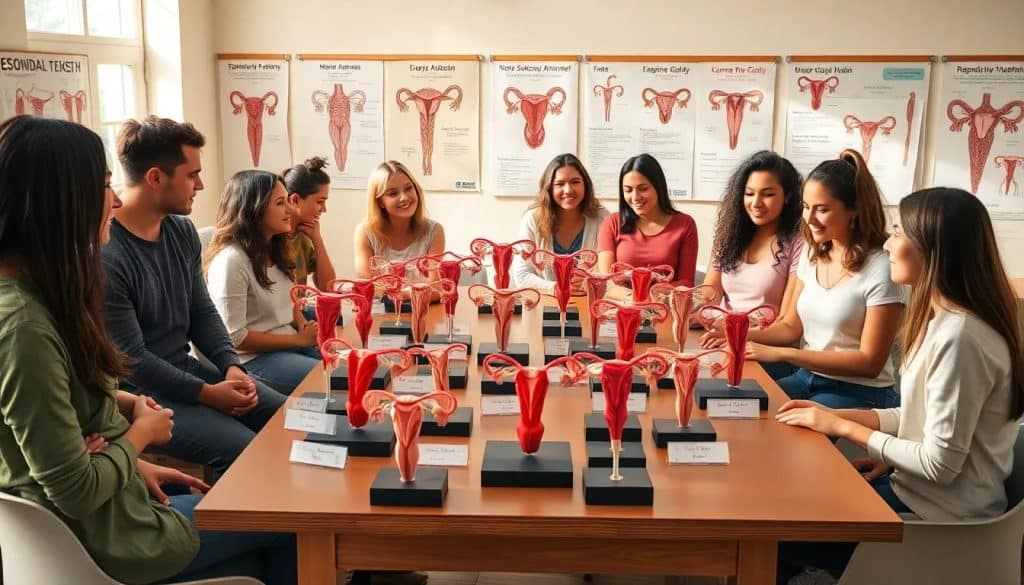The topic of female anatomy, particularly the diversity of vaginas, is often surrounded by myths and misconceptions. Understanding the different vagina types is essential for promoting body positivity and awareness. In this article, we will explore how many vagina types are there and delve into the fascinating variations of female genitalia.
From labia shapes to the overall structure of the vagina, it’s crucial to recognize that there is no “normal” appearance. Each individual is unique, and embracing this diversity can encourage healthier conversations about women’s health.

What are the different types of vaginas?
When discussing the question, how many vagina types are there, it’s important to note that the vagina itself is just one component of the broader female genital anatomy. The external part, known as the vulva, encompasses various structures, including the labia. The diversity in these anatomical features showcases a wide range of shapes and sizes.
In general, there are several categorization methods for vagina types based on appearance and anatomy. Key features include:
- Labia majora: The outer lips that protect the inner structures.
- Labia minora: The inner lips that can vary significantly in size and shape.
- Vaginal canal: The internal passage leading to the cervix.
Moreover, some women may have more pronounced features, while others may possess a more subtle appearance. It’s crucial to recognize that all these variations are normal and healthy.
What do we mean by different vagina shapes?
The notion of different vagina shapes encompasses the various configurations of the vulva and vagina. These shapes aren’t merely aesthetic; they can have implications for comfort and health. Factors such as genetics, hormonal changes, and even age can influence the morphology of these structures.
Different vagina shapes often include distinctions in:
- Size and prominence of the labia majora and minora.
- The visibility of the clitoral hood.
- Overall symmetry and asymmetry in the structures.
Understanding these differences helps dispel the myth that there is a singular, ideal appearance for female genitalia. Each shape is a part of a diverse spectrum of human anatomy.
Are there variations in labia shapes and sizes?
Yes, variations in labia shapes and sizes are incredibly common. The labia can differ not only in size but also in color, texture, and contour. This diversity is known as the diversity of labia shapes and sizes and is influenced by several factors, including genetics and hormonal levels.
Some women have larger labia minora that extend beyond the labia majora, while others may have smaller labia that are more tucked in. It’s important to understand that both configurations are entirely normal. Studies have shown that labial size and shape can also change due to hormonal fluctuations during different life stages.
Furthermore, the concept of beauty is subjective, and societal standards often misrepresent what is considered normal. Embracing the uniqueness of one’s anatomy can significantly enhance body positivity.
What are the common features of the vagina?
The vagina itself is a muscular canal that connects the external genitals to the uterus. Common features include:
- Elasticity: The vaginal walls are elastic and can stretch during activities such as intercourse and childbirth.
- Lining: The inner lining of the vagina is moist and plays a role in protecting against infections.
- Self-cleaning: The vagina has a natural self-cleaning mechanism, which includes the release of discharge.
These features work together to support a woman’s reproductive health. It is also important for women to monitor their vaginal health and recognize any changes that may require medical attention.
When should you see a doctor regarding vaginal health?
Women should be aware of their bodies and recognize when to seek medical advice regarding vaginal health. Signs that may indicate a need for a doctor’s visit include:
- Unusual discharge: Changes in color, odor, or consistency can signify an infection.
- Discomfort or pain: Any persistent pain or discomfort during intercourse or daily activities should be evaluated.
- Itching or irritation: Unexplained itching or irritation can indicate various conditions that may require treatment.
It’s essential for women to prioritize their health and seek professional advice when they experience concerning symptoms. Regular gynecological check-ups can also help in maintaining overall vaginal health.
How does childbirth influence vagina shape and size?
Childbirth can lead to changes in the shape and size of the vagina. During delivery, the vaginal canal stretches significantly, which may affect its elasticity and overall structure afterward. Many women notice variations in their vaginal appearance post-childbirth.
Some common changes include:
- Widening: The vaginal canal may become wider due to the stretching effects of childbirth.
- Changes in labial appearance: Labia may also change in size due to the pressure exerted during delivery.
While these changes are normal, they can also impact sexual experience and comfort. Fortunately, many women find that their bodies naturally return to a state of balance with time.
What is labial hypertrophy and how does it affect women?
Labial hypertrophy refers to an enlargement of the labia minora, which can vary significantly among individuals. This condition is often characterized by asymmetrical or larger labia compared to typical sizes. While some women may experience discomfort or self-consciousness, it’s crucial to understand that labial hypertrophy is a normal variation in female anatomy.
In some cases, women may seek surgical intervention to reduce the size of their labia if they experience physical discomfort or psychological distress. However, it’s essential to approach this decision thoughtfully, considering the diverse range of normal anatomical variations.
Ultimately, embracing the unique aspects of one’s body can foster a healthier relationship with self-image and promote body positivity.
Frequently asked questions about female genitalia diversity
Why do some girls’ labias hang out?
The appearance of labias can vary widely among individuals, and factors such as genetics and hormonal levels play a significant role. Some girls may have labia minora that are more prominent, causing them to extend beyond the labia majora. This is a natural variation and not a cause for concern. Understanding the normal vulva appearance and health indicators can help alleviate any worries about anatomical differences.
How does a healthy vagina look?
A healthy vagina can exhibit a range of appearances. The important factors to consider include moisture, elasticity, and absence of discomfort or unusual discharge. It’s essential to recognize that there is no single “normal” look for a vagina; instead, variations in size, shape, and color are all part of healthy diversity. Prioritizing regular check-ups and understanding the body’s signals will help maintain vaginal health.
Why do some vaginas look different?
Differences in appearance among vaginas stem from a variety of factors, including genetics, hormonal influences, and even lifestyle. Just as individuals possess unique facial features, the same applies to genitalia. This variation is entirely normal and should be embraced as part of the incredible diversity of female anatomy.
How many types of female parts are there?
While the categorization of female parts can vary, generally they include the vulva, vagina, clitoris, and surrounding tissues. Within each category, there are numerous variations in size, shape, and structure, contributing to the overall diversity in female anatomy. Understanding these distinctions helps to challenge societal norms and promote acceptance of natural anatomical differences.
For a deeper understanding of female anatomy, check out this informative video:










